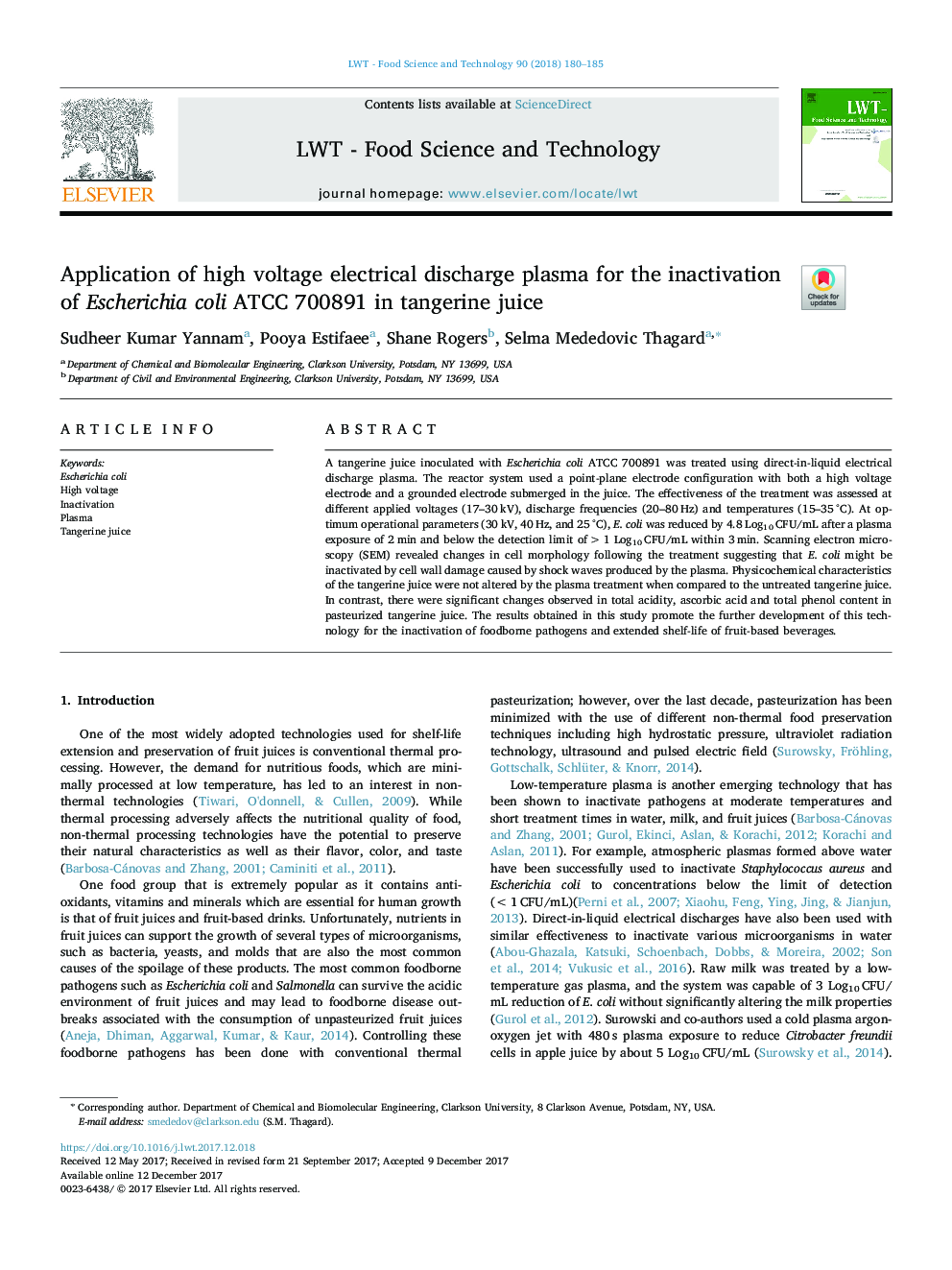| Article ID | Journal | Published Year | Pages | File Type |
|---|---|---|---|---|
| 8891528 | LWT - Food Science and Technology | 2018 | 6 Pages |
Abstract
A tangerine juice inoculated with Escherichia coli ATCC 700891 was treated using direct-in-liquid electrical discharge plasma. The reactor system used a point-plane electrode configuration with both a high voltage electrode and a grounded electrode submerged in the juice. The effectiveness of the treatment was assessed at different applied voltages (17-30â¯kV), discharge frequencies (20-80â¯Hz) and temperatures (15-35â¯Â°C). At optimum operational parameters (30â¯kV, 40â¯Hz, and 25â¯Â°C), E. coli was reduced by 4.8 Log10â¯CFU/mL after a plasma exposure of 2â¯min and below the detection limit of >1 Log10â¯CFU/mL within 3â¯min. Scanning electron microscopy (SEM) revealed changes in cell morphology following the treatment suggesting that E. coli might be inactivated by cell wall damage caused by shock waves produced by the plasma. Physicochemical characteristics of the tangerine juice were not altered by the plasma treatment when compared to the untreated tangerine juice. In contrast, there were significant changes observed in total acidity, ascorbic acid and total phenol content in pasteurized tangerine juice. The results obtained in this study promote the further development of this technology for the inactivation of foodborne pathogens and extended shelf-life of fruit-based beverages.
Related Topics
Life Sciences
Agricultural and Biological Sciences
Food Science
Authors
Sudheer Kumar Yannam, Pooya Estifaee, Shane Rogers, Selma Mededovic Thagard,
